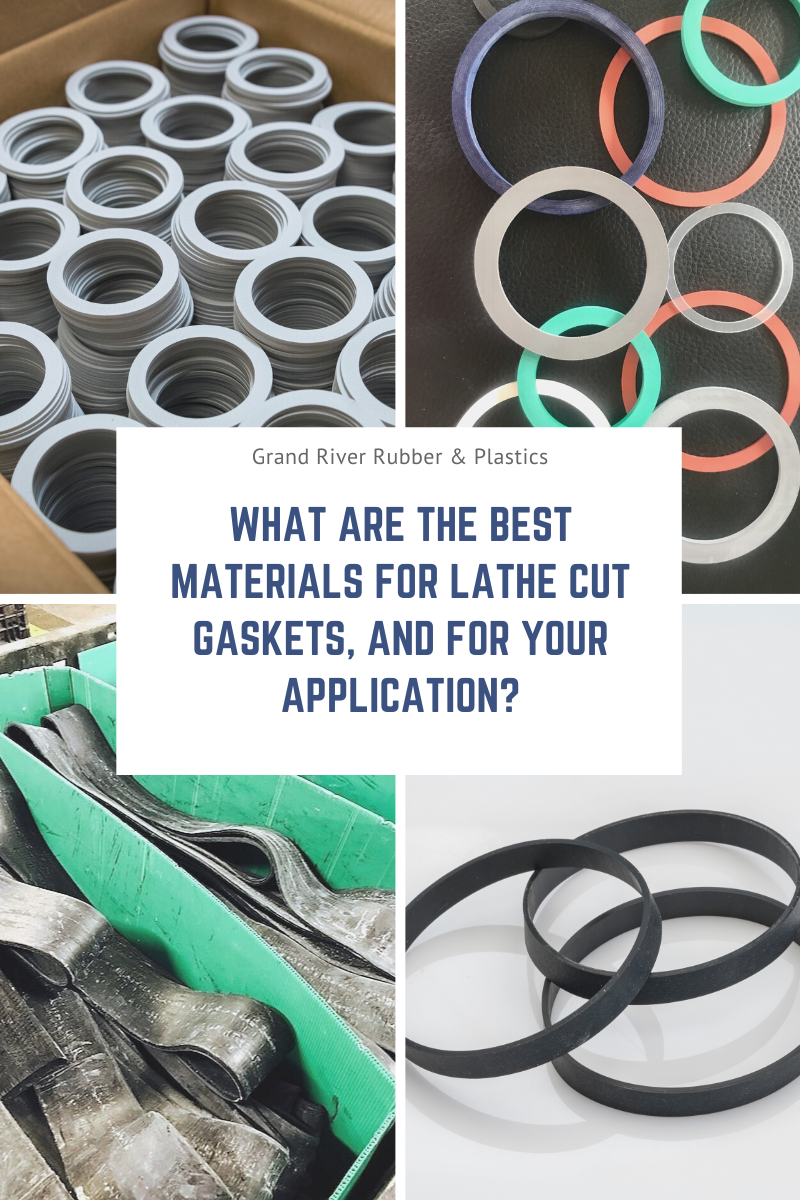Using the right material for a quality seal to avoid problems later

Material selection has a huge impact on the success of a part and the effectiveness of a seal, and therefore affects the performance of an entire assembly. So when you ask, “what’s the best material for my gasket?” the easy answer is, “it depends.” But easy answers don’t work in most situations, including this one.
At Grand River, we have a longer answer to the question “what material is best for my gasket?” Choosing the best material for a lathe cut gasket requires understanding design elements, as well as various materials’ advantages and limitations.
With more than four decades of expertise and experience, we provide our customers with the compounds that meet their specific needs while utilizing the most cost-effective materials for their designs and applications. Below, we offer some general guidelines to help in choosing the correct material for your application. Of course, we know each application is unique. If you have questions about selecting the best material for your gasket, ask us. We’re happy to help.
Looking for a specific material? See a list of our materials here.
Common Gasket Materials for Oil and Gas Applications
In applications where a gasket is in contact with oil or gas, nitrile rubber or NBR is usually a good choice. Nitrile rubber (sometimes called Buna-N), a synthetic, is more resistant to oils and fuel than natural rubber thanks to various added amounts of acrylonitrile (ACN), which contributes to NBR’s oil and fuel resistance.
Because of its resistance to oil, fuel and other chemicals, NBR is a solid choice for lathe cut gaskets in most automotive and many aeronautical applications, with a few important exceptions.
The acrylonitrile which makes NBR more resistant to gas and oil also makes it more susceptible to low temperatures, so it is typically a better choice for enclosed applications than those subjected to outdoor weather conditions or other low temperature situations.
Specifying Gasket Materials for Static vs. Dynamic Applications
While many factors go into material selection for lathe cut gaskets used in static applications, even more issues affect seals in dynamic applications.
Natural rubbers and neoprene (a synthetic) can be good choices for dynamic applications, assuming the seal does not come in contact with oil and gas. When the dynamic seal is needed in an oil and gas environment, Nitrile or hydrogenated nitrile rubber (HNBR) is usually a better choice. In certain circumstances – typically enclosed, and with no fuel contact - SBR (Styrene-butaldine) can also be a good choice.
Because dynamic applications have so many variables – compression and load bearing, friction, lubrication method, temperature and other conditions – many of our customers have questions during the design and specification process. Our experienced staff can help you weigh those variables and others to determine the best material for your dynamic application.
Want to talk about stretch and squeeze? Creating a seal for new hardware? Contact us.
Choosing Gasket Materials for Food Grade Applications
Selecting materials for food grade applications comes with a long list of concerns (and regulations). The Food & Drug Administration’s Code of Federal Regulations Title 21 details which materials can be used in certain applications, including the percentage of those materials that can be used in food grade applications.
If you have any questions about your food grade applications, we can help. As the only Lathe Cut Gasket Manufacturer recognized on the FDA’s Interstate Milk Shippers (IMS) List, and thanks to our experience working with customers that ship food grade products abroad, we’re aware of many issues that affect choosing compliant materials allowed for use the food and beverage industry.
Concerned about compliant materials for your food grade products? We can help.
Choosing a Gasket Material for Outdoor Applications
EPDM (Ethylene-Propylene-Diene Monomer), an elastomer with the ability to resist degradation from weathering agents like UV rays, ozone and heat, is an excellent material for many outdoor applications. EPDM is also highly resistant to polar substances and steam, and tends to remain flexible in low temperatures.
While EPDM works well in seals for many outdoor applications, it is not the only gasket material that’s suitable for outdoor applications. The cutting style and design of a lathe cut gasket may indicate that a particular material will be suitable – or make it more likely to fail. For example, EPDM is not recommended in oil and gas applications. However, depending on the design, EPDM can be a good choice in some marine and industrial applications.
Neoprene is another good choice for seals in certain outdoor applications, including some marine and industrial uses, as it has a moderate resistance to oils and gasoline. However, it has limited flexibility in low temperatures which can rule it out for a number of dynamic applications.
For a full list of our materials, check out our materials page.
Have questions about optimizing your seal and gasket effectiveness? Wondering if a particular material is “off limits” for your application or cutting style? Quite often the application dictates the cutting style, and the cutting style can certainly affect the material selection. When you have questions about lathe cut gaskets, our team is here to help.
